National Innovation visa, replacing the current Global Talent visa
The Government will implement a new National Innovation visa, replacing the current Global Talent visa (subclass 858) from late 2024, to target exceptionally talented migrants who will drive growth in sectors of national importance.
Ending onshore visa hopping
The Minister for Home Affairs published a media release that announces further changes to the migration system that were articulated within the Migration Strategy. These changes are to stop what is referred to in the Migration Strategy and the media release as visa hopping where temporary visa holders continue to apply for further temporary visas onshore to extend their stay in Australia with little prospect of becoming permanent residents.
As a measure to restrict visa hopping the media release outlines the following changes to commence from 1 July 2024:
- Visitor visa (sc 600) holders will not be able to apply for Student (Sc 500) visas onshore.
- Temporary Graduate (Sc 485) visa holders will not be able to apply for Student (Sc 500) visas onshore.
The legislative instruments that will bring about these changes have not yet been released.
Permanent Migration Program
The Government will set the 2024–25 permanent Migration Program planning level at 185,000 places and allocate 132,200 places (around 70 per cent) to the Skill stream.
From 2025–26, the Government will extend the planning horizon for the permanent Migration Program from one year to four years. (Budget paper 2, p8) The actions underway as part of the Migration Strategy are delivering a better managed migration system.
Government actions are estimated to reduce net overseas migration by 110,000 people over the forward estimates from 1 July 2024. Net overseas migration is forecast to approximately halve from 528,000 in 2022–23 to 260,000 in 2024–25 (Budget paper 1, p 24)
The long awaited Migration Strategy was released on 11 December 2023. An overview of the new strategy, which is designed to make our skilled migration system more focused on skills required to build productivity and use permanent migration to build and innovative and effective workforce for Australia’s future can be seen below.
Work and Holiday visa – China, Vietnam and India
The Government will introduce a visa pre-application (ballot) process for the capped Work and Holiday (subclass 462) visa program for China, Vietnam and India from 2024–25. The ballot process will help to manage program demand and application processing times for these countries. A ballot charge of $25 (indexed to the Consumer Price Index in future years) will apply (Budget paper 1, p 9)
Mobility Arrangement for Talented Early-professionals Scheme (MATES)
The Government will implement a new Mobility Arrangement for Talented Early-professionals Scheme (MATES) program for Indian nationals from 1 November 2024. MATES will provide a new mobility pathway for 3,000 Indian graduates and early career professionals (aged 18 to 30 years at the time of application), with knowledge and skills in targeted fields of study to live and work in Australia for up to two years. The visa will have a pre-application (ballot) charge of $25 and an application charge of $365, both of which will be indexed to the consumer price index in future years (Budget paper 2, p 7).
Extending the validity of the Business Visitor visa for Indian nationals
The validity of the Visitor visa (subclass 600) Business Visitor stream for Indian nationals from up to three years to up to five years. This measure is estimated to increase receipts by $435.0 million and increase payments by $70.9 million over the 5 years from 2023–24
National Innovation visa, replacing the current Global Talent visa
The Government will implement a new National Innovation visa, replacing the current Global Talent visa (subclass 858) from late 2024, to target exceptionally talented migrants who will drive growth in sectors of national importance.
Business Innovation and Investment visa program (BIIP) 188 visa will cease
The Business Innovation and Investment visa program (BIIP) 188 visa will cease, with refunds of the visa application charge provided from September 2024 for those who wish to withdraw their BIIP application. (Budget paper 2, p 136).
Temporary Skill Shortage (subclass 482) visa – work experience reduced
The Government will also reduce the work experience requirement for the Temporary Skill Shortage (subclass 482) visa from two years to one year for all applicants from 23 November 2024 onwards (Budget paper 2, p 136).
The strategy based on 8 key actions:
- Targeting temporary skilled migration to address skills needs and promote worker mobility
- Reshaping permanent skilled migration to drive long-term prosperity
- Strengthening the integrity and quality of international education
- Tackling worker exploitation and the misuse of the visa system
- Planning migration to get the right skills in the right places
- Tailoring regional visas and the Working Holiday Maker program to support regional Australia and its workers
- Deepening our people-to-people ties in the Indo-Pacific
- Simplifying the migration system to improve the experience for migrants and employers
Certain parts of the strategy are still to be finalised after further consultation as recommended by the Parkinson review. The key announcements include:
Migration Program Planning
The government will extend migration planning beyond the current 12 month planning cycle to fill critical skills shortages and ensure better collaboration with the states and territories.
Net overseas migration numbers are expected to fall from 510,000 in the 2022-23 financial year to 375,000 next financial year and 250,000 in 2024-25. The numbers are predicted to stabilise at this lower level from that time on.
International student numbers grew to 270,000 in 2022-23 up from 170,000 in 2028-19 prior to COVID, which also saw a return to Australia of students who had been forced to study online and offshore during the pandemic.
Temporary visa holders, ie Temporary Skilled, Working Holidays Maker and COVID pandemic event visas, accounted for 180,000 places in 2022-23, up from 100,000 in 2018-19.
Related:
Skilled In Demand Visa- Replacement of TSS 482 visa
A new three tiered system of visa pathways (Skills in Demand Visa) to replace the TSS SC 482.
- The specialist skills visa pathway will not have an occupational list and a processing turnaround of 7 days. Trades occupations, machinery operators, drivers and labourers will be excluded from this visa class. There will be 3,000 places allocated per year. The ‘specialist skills’ visa for those earning over $135,000 per year.
- The core skills visas pathway are expected to provide the majority of visa for the program. trades workers will be required to apply under this visa based on a revised ‘skills in demand list’ developed by Jobs and Skills Australia. The ‘core skills’ visa for the $70-135,000 cohort. Earnings to be at least TSMIT, currently set at $70,000, but to be indexed annually.
- The details of the essential skills visa pathway are yet to be finally determined. This visa will involve union oversight, be capped and be restricted to specific sectors. To date the aged care and disability sectors have been mentioned. The ‘essential skills’ visa is for those earning under $70,000.
The visas will be granted for up to 4 years and visa holders will be able to change employers more easily and provide clear pathways to permanent residency. The ‘TSMIT‘ will be indexed annually and a public register of employer sponsors to allow more ease with moving between employers.
Key elements of the Skills in Demand visa include:
- Time spent with any approved employer will count towards permanent residence requirements
- Skills in Demand visa holders will have access to self-nominated independent permanent pathways, in addition to employer-sponsored pathways
- The visa will provide for a 4-year stay for all streams
- median processing time of 21 days
- Skills in Demand Visa holders will have the ability to move between sponsors with an 180 day time period to find a new sponsor
- Streamlined labour market testing (LMT) requirements will be introduced. The requirement to advertise on Workforce Australia has already been removed
Skilling Australians Fund
Consideration will be given to collecting the SAF in smaller increments over time in recognition of the greater freedom of visa holders to change employers. A monthly or quarterly payment model will be explored.
Labour Market Testing
LMT is to be streamlined, although the only announcement so far is that the requirement to advertise on the Workforce Australia site will be abolished. The validity of advertising period will increase from 4 to 6 months.
LMT will be gradually phased out as Jobs and Skills Australia data on skills shortages improves and a Core Skilled Occupation List created as an alternative to LMT.
Points tests
The points test will be reviewed. Further consultation will occur on a new points test, with the development of a new analysis-based points test to identify more effectively the independent migrants who will make the greatest contribution to the country. This pathway will have a faster pathway to permanent residence for graduates working in skilled jobs.
Temporary 485 Graduate Visa changes 2024
There will be considerable change to the 485 visas as they become more targeted towards international graduates with skills required by Australian employers, including:
- reducing the length of stay for these international graduates (see below table)
- preventing holders of the new graduate visas from moving back onto student visas
- preventing the stay of International graduates without skills in demand from remaining in Australia.
- reducing the age eligibility from 50 to 35 years of age
- increased English language levels for temporary graduate visas -IELTS 6 to IELTS 6.5
- Students studying in regional areas will have eligibility for a second visa of between 1 to 2 years in length depending on their location
| Qualification | Period of stay |
| Bachelor degree or Masters by coursework | 2 years |
| Masters by research of PhD | 3 years |
Student visas
There will be significant changes to the student visa program, although the number of places will not be capped. Instead other migration levers will be used to control numbers, including;
- higher English language levels for student visa applicants
- reducing the types of courses eligible for student visas with the focus on retaining tertiary university courses
- preventing course swapping
- increased funding for visa integrity and to identify the ‘genuine student test‘.
From early 2024, the English requirements for Student visas will be increased to:
- IELTS 5.0 or equivalent for ELICOS student visa applicants
- IELTS 5.5 or equivalent for student visa applicants undertaking foundation or pathway programs with reputable English language training
- IELTS 6.0 or equivalent for other student visa applicants
- IELTS 6.5 or equivalent for Temporary Graduate visa applicants
Regional migration
The government has acknowledged the lack of success of current regional migration strategies in attracting migrants to those locations. The government will work closely with the state and territories to provided better targeting of regional population needs. Regional visa applications will also be fast tracked.
Regional migration settings and the Working Holiday Maker program will be reviewed to ensure migration supports development objectives in regional Australia and does not contribute to the exploitation of migrant workers.
Working Holiday Makers
No changes at this stage to the WHM program although the length of stay and the 88 day rules are under consideration.
Global Talent and Business Skills
The Global Talent program will be more sharply focused on a relatively small number of migrants who can make outsized contributions to Australia. There will be consideration of a new ‘talent and innovation’ visa.
The Business Innovation and Investment Program has seen over 80% of company directors invest in small retail or hospitality businesses, rather than in sectors that will drive Australia’s future innovation and productivity. The Significant Investor Visa program looks set to continue with some further adjustment.
Foreign Investment Fees for property
it has also been announced that foreign investors who buy established homes and and higher penalties if they leave them vacant.
The foreign investment fees will be tripled and vacancy fees will be doubled for all foreign owned dwellings purchased since 9 May 2017.
Related: Buying a Property in Australia – Temporary Residents
English Language requirements
| Visa type | Current | Future | Implementation |
| Temporary Graduate 485 visa (TGV)
– The Government will increase the minimum score required for a TGV from IELTS 6.0 to 6.5 (or equivalent1), with a minimum score of 5.5 for each component of the test (reading, writing, speaking and listening). – The Government will decrease the test validity window for a TGV from 3 years to 1 year. TGV applicants will need to provide evidence that they have completed an English Language test 1 year immediately before the date of the visa application. |
6.0 | 6.5 | Early 2024
Changes to English language requirements will apply to all Student and Temporary Graduate visa applications lodged on and after the day of commencement. |
| Student visa (subclass 500)
– The Government will increase the minimum score required for a Student visa from IELTS 5.5 to 6.0 (or equivalent2). |
5.5 | 6.0 | |
| ELICOS
– The Government will increase the minimum score required to undertake a packaged ELICOS from IELTS 4.5 to 5.0. – For those students studying English only through ELICOS, there will be no change given the generic nature of their study. |
4.5 | 5.0 | |
| University Foundation or Pathway programs
– The test score required for students undertaking university foundation or pathway programs that deliver English language training will be IELTS 5.5 (or equivalent). |
5.5 | 5.5 | Further consultation will be conducted on other pathway programs in 2024. |
1 Other English test provider equivalent scores: OET (C+); TOEFL iBT (79); PTE Academic (57); Cambridge English Advanced (CAE) (176), accepted if test is taken on or after 1 January 2015.
2 Other English test provider equivalent scores: TOEFL iBT (60) accepted if test is taken on or before 25 July 2023; Cambridge English Advanced (CAE) (169); Pearson Test of English Academic (PTE Academic) (50); Occupational English Test (B for each of the four components).
Student processing priorities and Genuine Student requirements
| Measure | Implementation | |
| Ministerial Direction No. 107 The order for considering and disposing of Student Guardian visa applications and offshore Subclass 500 (Student) visa applications. | Ministerial Direction No.107 establishes prioritisation of processing Student and Student Guardian visa caseloads based on the risk- level of providers. | Commenced 15 December 2023.
Ministerial Direction 107 sets out the overall priorities for the processing of offshore Subclass 500 (Student) visa applications and Student Guardian visa applications. It prioritises processing of applications in accordance with provider level risk, as assessed by their evidence level under the Simplified Student Visa Framework SSVF. Under the Ministerial Direction, higher risk providers will experience slower processing times as visa decision makers consider the integrity of a provider, as well as the individual applications. |
| In short, all visa applications will continue to be processed but low risk applications are given priority. | ||
| Ministerial Direction on Genuine Student requirement | This Ministerial Direction will outline key areas of consideration to support decision makers, including the circumstances of the applicant, such as their academic or career progression and the usefulness of the intended study to their future career prospects.
The Direction will be clear in setting the expectations of students who come to complete study in Australia. Those who do not meet those requirements will not be granted a student visa. |
Early 2024
The ‘Genuine Student’ Ministerial Direction will apply to Student and Student Guardian applications made on and after the day of commencement (to be determined). Student visa applicant form changes will reflect required information under the Genuine Student requirement, including the applicant’s knowledge of and interest in their chosen course of study and a declaration that confirms that the applicant: · understands what it means to be a genuine student; · understands and intends to comply with their visa conditions; and |
| · understands that post-study pathways to permanent residence are limited. |
Related: Migration Strategy Australia 2024
25 November 2023 Changes
As you maybe be aware a significant number of changes came into effect last Saturday 25 November 2023, these included;
- a pathway through the 186 TRT stream to ENS SC 186 (and RSMS SC 187 in some cases) no matter which stream the applicant had been sponsored under on their TSS SC 482 or SC 457 visa
- applicants holding SC 482 or 457 are now able to apply for SC 186/187 after two years with their sponsor, done from three years
- applicants sponsored under Labour Agreements (LA) are also able to access these reduced time-frames, where they have not accessed concessions under the agreement. Those who have accessed concession are required to complete the requirements for access to SC 186 visas as per the original LA
- COVID concessions were also ceased on that date, without prior warning, which led to consequential amendments to a number of visa classes
- SC 309, 820, 801 and 485 visas can now be granted no matter the location of the applicant at the time of grant
- SC 309 visa applicants were given direct access to appeal to the AAT for review of visa refusals.
Given the impact of the cessation of the COVID concession, we recommend booking an appointment to discuss your case.
Related:


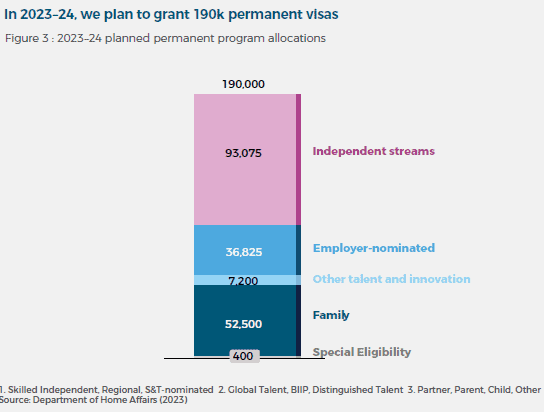
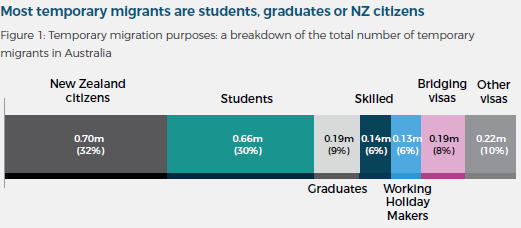
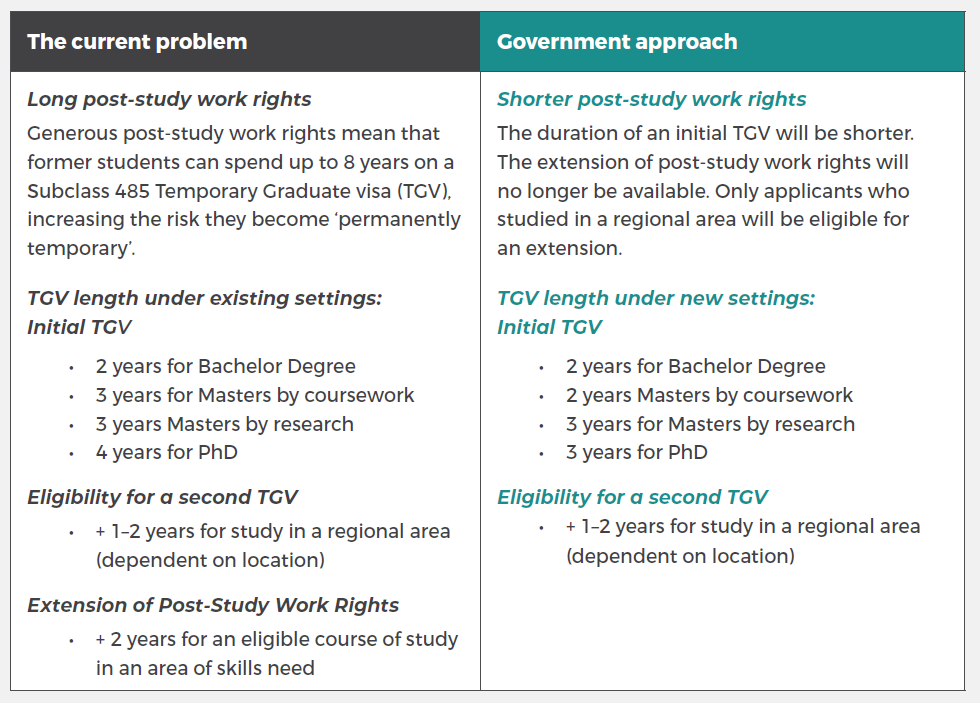
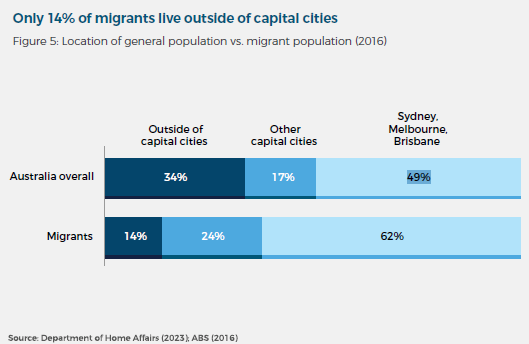
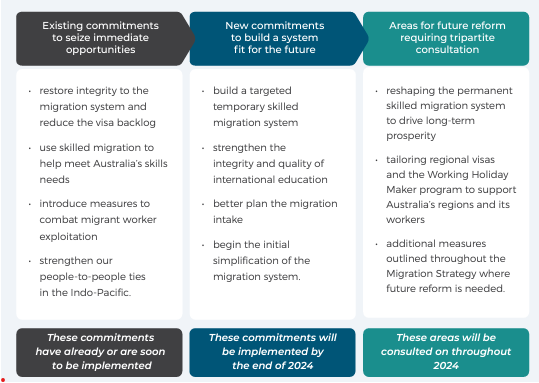



Tasmania – Health and Allied Health Occupations List (TSE Pathway)
Tasmania – TSE Priority Occupation List (2025-26)
Australia Migration Updates: Visa Processing Times, Program Levels, and New Visas – September 2025
Changes to English Language Tests for Visa Applicants from 7 August 2025
PTE Academic Test Enhancements – Effective from 7 August 2025